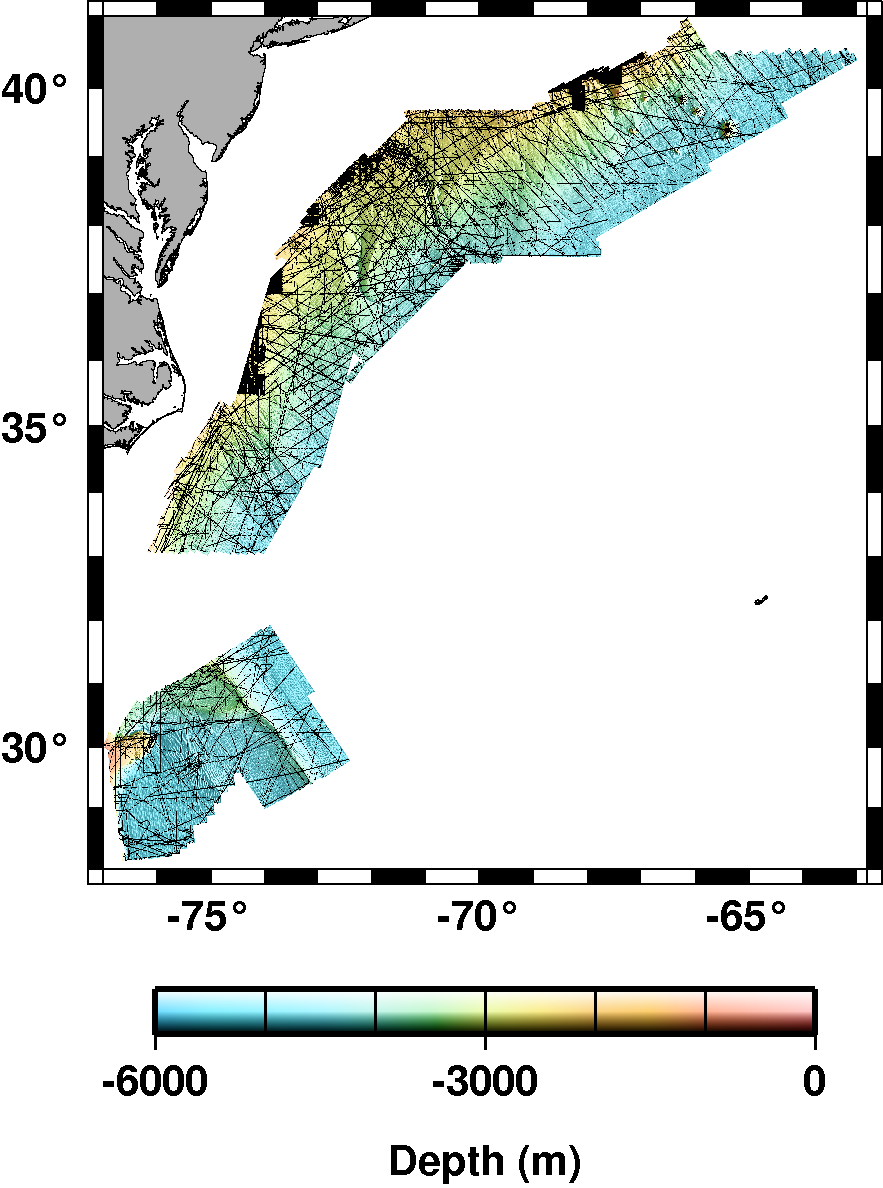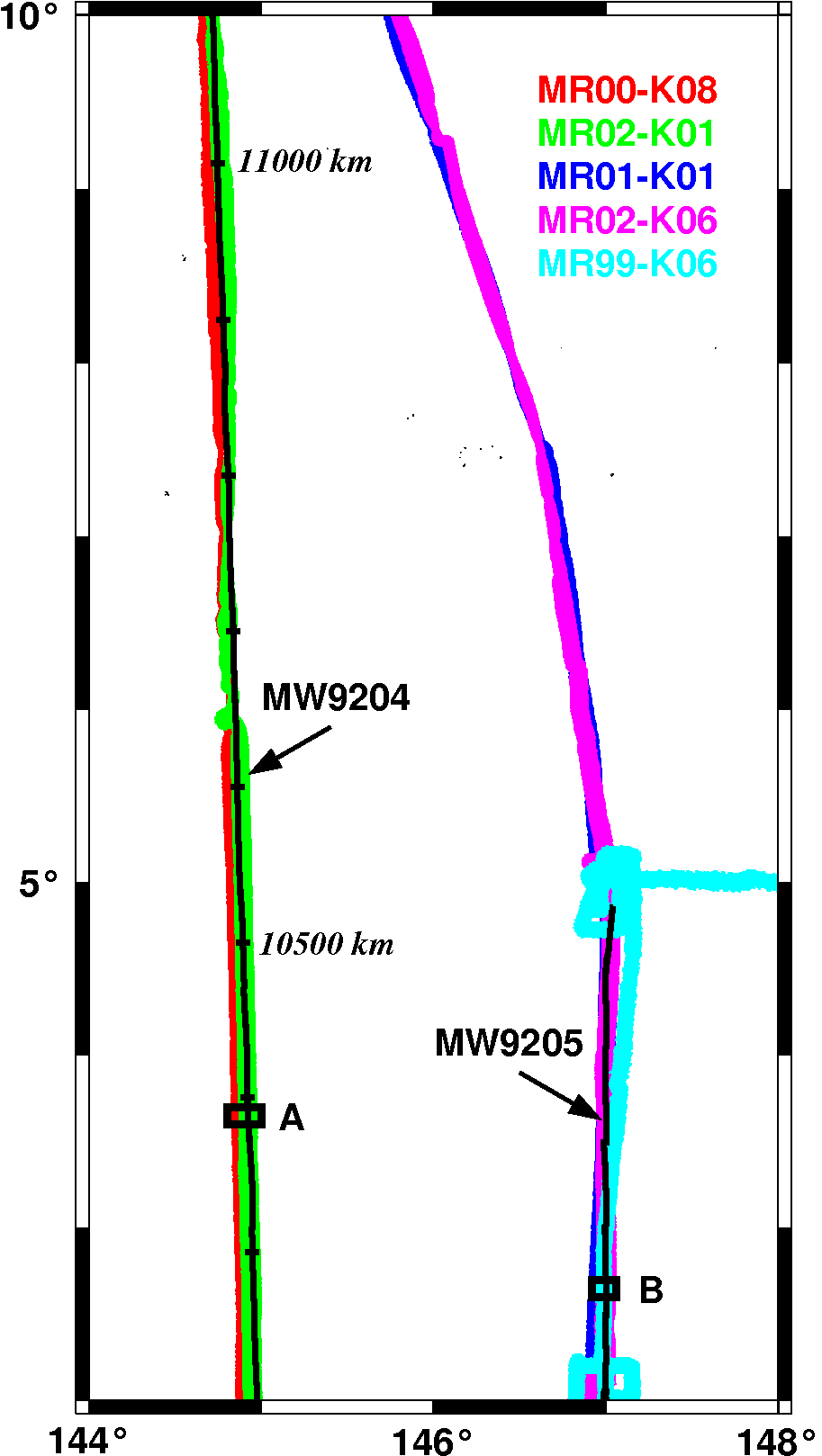Altimetric Bathymetry
An uncertainty model for deep ocean single beam and multibeam echo sounder data
Comparing single beam and multibeam echo sounder data where surveys overlap we find that: 95% of multibeam measurements are repeatable to within 0.47% of depth; older single beam data can be at least as accurate as multibeam; single beam and multibeam profiles show excellent agreement at full-wavelengths longer than 4 km; archival sounding errors are not Gaussian; 95% of archival soundings in the northwest Atlantic are accurate to within 1.6% of depth; the 95th percentile error is about five times greater in pre-1969 data than in post-1968 data; many of the largest errors are located over large seafloor slopes, where small navigation errors can lead to large depth errors.
Our uncertainty model has the form σ2 = a2 + (bz)2 + (cs)2, where 2σ is approximately the 95th percentile error, z is the depth, s is the slope, and a, b, c are constants we determine separately for pre-1969 and post-1968 data.
These results are published in:
K. M. Marks and W. H. F. Smith, An uncertainty model for deep ocean single beam and multibeam echo sounder data, Marine Geophysical Researches, 29(4), 239-250, Dec. 2008. Published online: 23 January 2009, DOI: 10.1007/s11001-008-9060-y. Author-produced PDF, (PDF, 637 KB).


